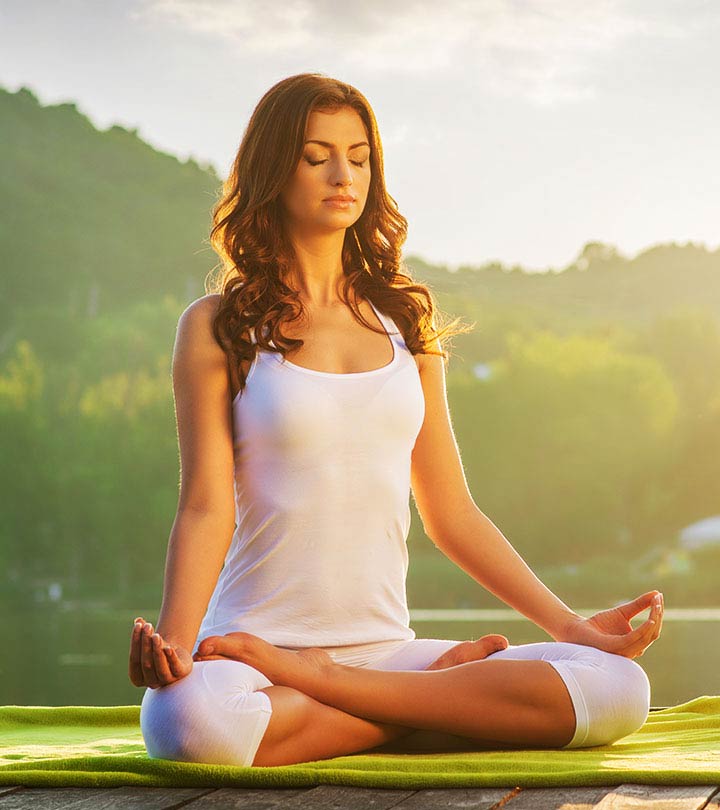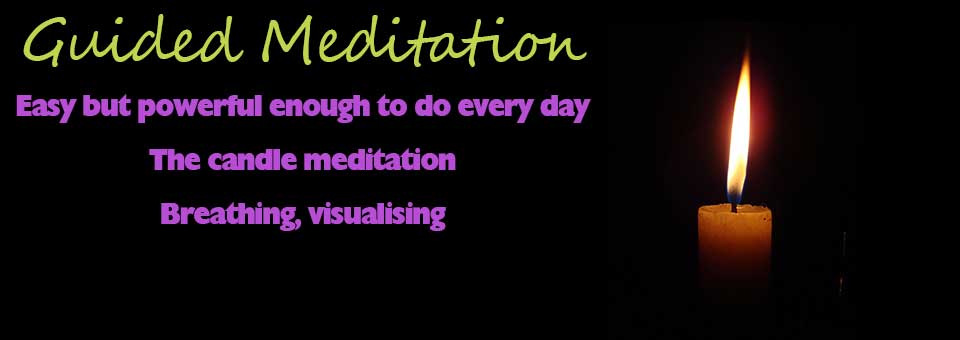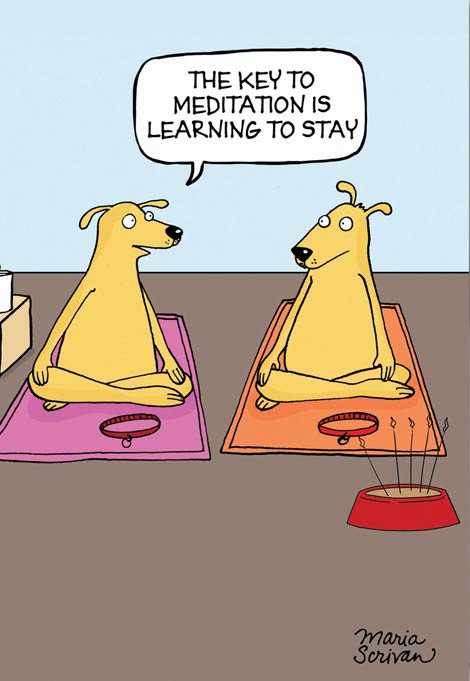1. We start with a superficial, scattered mind ÔÇô (This is the level
with which we often carry out our day-to-day chores, ÔÇśbring in the newspaperÔÇÖ,
ÔÇścook the mealÔÇÖ - it is often characterised by lots of thoughts, positive
and negative, with very little control or knowledge of how they got
there) If we are often in this state of mind, we will find that we are
easily distracted, have difficulty concentrating, probably worry about
unimportant things and have little understanding of the real 'us'.

2. We then progress by virtue of our heartÔÇÖs concentration - to deeper,
analytical thinking. When our mind is focused completely on one thing,
we are the most efficient and purposeful in our thinking. (This is the
basis of the rules of ÔÇśtime-managementÔÇÖ -> to be focused absolutely
on one task at a time) This analytical level reveals the deepest we
can go with thought. We can use a number of meditation techniques to
achieve this, and they will be explored in further classes.
3. From this very deep thinking we enter into intuitive states, revelations,
"I know this is right" feelings or extremely vivid goals or intense
creativity or spiritual dreams. When thinking deepens and intuitive experience
takes over, this is meditation. We call these moments, 'Aah'
moments. These moments are where the deepest moments of revelation and
intuition are born, and where we reveal our real self.
The task of meditation is to enter the very focused
thinking of the analytical mind and from there the shift to the intuitive
mind or heart takes place automatically.
The highest experience in
any endeavour is a meditation experience.
Every endeavour goes through similar processes to eventually arrive
at meditation experiences.
If, for example, we want to become a pianist, we first have to train the
body and the mind to have the correct finger technique etc. For a footballer,
the right kicking style; for a rock-climber, the right moves; so we concentrate
past the superficial to the analytical mind and learn and practice as efficiently
as possible.
As we progress in each endeavour there are moments
where our consciousness is transported past the analytical to the intuitive
or higher mind or what we may call the heart. Examples of these intuitive
or ÔÇśmeditativeÔÇÖ moments are typically where a team works as one, a runner
experiences the ÔÇśrunnerÔÇÖs highÔÇÖ, a bushwalker ceases to be an observer and
merges into the feeling of the forest and becomes a participant, a sports
person hits a ÔÇśzoneÔÇÖ. As we know already these moments are usually;

Memorable - when we look back on our lives these are
the moments that we recall.
What lies behind us and what lies before us
are tiny matters compared to what lies within us.
- Oliver Wendell Holmes
Fulfilling - they are the reason we spend hours at
our endeavours so we can get a few moments of ÔÇśmeditationÔÇÖ.
Accidental - imagine how much better our lives would
be if we could meditate at any time we chose.
The seven keys to meditation
1. Find a special place Set aside a special place that
is used only for meditation. If you have a spare room, great, but itÔÇÖs
fine to set aside a corner of your bedroom. This will be your sacred
space for self-discovery, so youÔÇÖll want to make it as inspiring as
possible.
You might like to:
┬Ě Cover a low table with a
clean, light cloth
┬Ě Place a candle on a table, and a vase with
fresh flowers if possible.
┬Ě You may also want to light some incense.
Together, these items will help create a meditative atmosphere.
2. Prepare Physically Your spiritual journey takes
place in and through your physical body. HereÔÇÖs how you can help prepare
it for meditation:

┬Ě Take a shower before meditating. If it isn't
possible to take a shower, wash your face and hands.
┬Ě Wear clean,
light, loose fitting clothes.
┬Ě Take your shoes off before meditating.
Your feet deserve a break too!
3. Sit Relaxed, Sit Straight ThereÔÇÖs no need to sit
in a special yogic posture to meditate. If you can sit comfortably on
a cushion on the floor, this is best. Otherwise a meditation stool or
chair is fine. The important thing is to be still and relaxed, to have
your back erect, and to have the flower and candle close to eye level.
People often ask if itÔÇÖs okay to meditate while lying down. We donÔÇÖt
recommend it; the most likely outcome is youÔÇÖll fall asleep. Always
remember to begin your meditation with six or seven ÔÇśpower-breathsÔÇÖ
ÔÇô long, slow deep breaths that release the myriad of thoughts and focus
your attention within.
4. Slow and Steady Wins the Race In the beginning,
five minutes of meditation a day is enough. Meditation is like an inner
muscle that you are slowly but surely making stronger. If you overwork
a muscle, it becomes sore; if you meditate for more than five minutes
and feel tension in your head or get a headache, you know youÔÇÖve gone
beyond your capacity. Try not to be concerned with expectations of what
your meditation is going to do for you or what your meditation experience
ÔÇśshouldÔÇÖ be. Just steadily, soulfully and sincerely practice and make
yourself alert to the messages that will begin to arise from within
If by giving up small pleasures, great happiness
is to be found, the wise should give up small pleasures, seeing the prospect
of great happiness - THE BUDDHA.
5. Choose the right time Make an appointment with yourself
and practice at the same time each day. Just as you feed your physical
body several times a day at certain times, meditation nourishes your
inner life so set at least one special time each day for your meditation
exercises. The best time to meditate is early in the morning,
before you enter into your daily activities. This way, the peace you
get from your meditation will permeate the rest of your day.
6. The Power of Music Music is often referred to as
the language of the soul. Peaceful music of the heart will create a
meditative atmosphere and tremendously enhance the quality of your meditation.
Play it softly during your exercises; merely listening to and absorbing
the music will help you to feel the deep inner stillness of meditation
7. YOU! In the end, the most important ingredient in
this whole process is you. It is you, who experiences, you, who is discovered,
you, who is the student, you, who is the real teacher and you, finally,
who is revealed.
Remind yourself of this often because this is
the greatest gift of meditation: faith in oneself.
Highly recommended A meditation journal is the best aid
I have included to my meditation over the years. Verbalising what you are
going through and/or what you are currently focusing on by writing down
these self-revelations formalises and crystallises the most crucial process
of listening to oneself.





 As you fix your gaze upon it, feel that
you are looking at the candle with your heart and that you are travelling
through it with infinite peace.
As you fix your gaze upon it, feel that
you are looking at the candle with your heart and that you are travelling
through it with infinite peace.